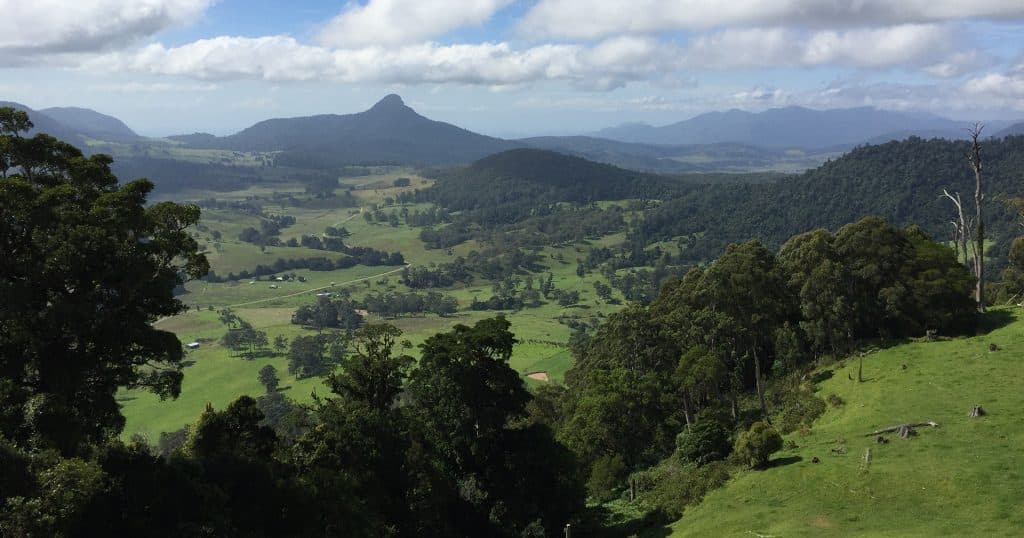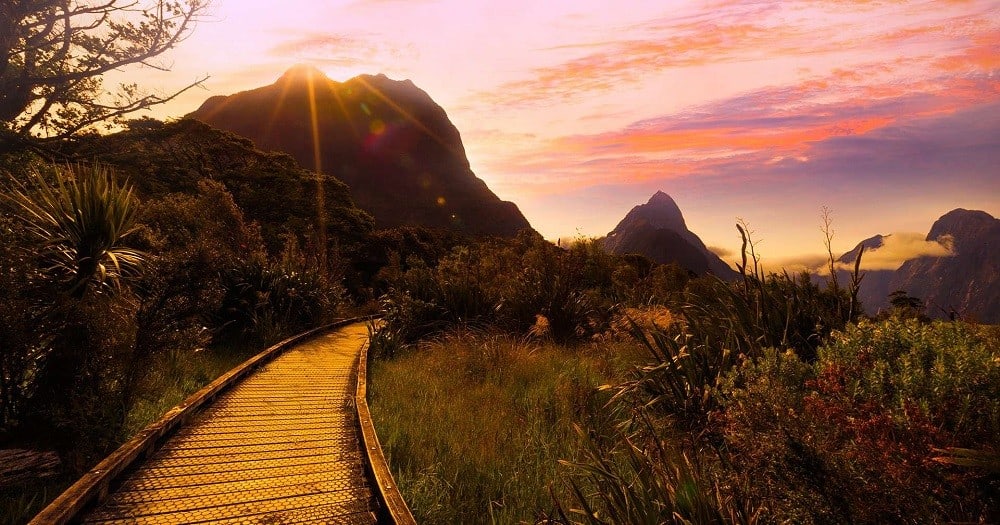In September 2014, podiatrists Oliver Fawcett and Kim Edwards, together with their 12-year-old twin daughters, Lucca and Finlay, completed 350km of the Camino de Santiago, a centuries-old pilgrimage to the shrine of St James in the Cathedral of Santiago de Compostela in northwestern Spain.
Here Oliver reports on the difference having the right footwear and equipment made to their trip.
Our journey began at the traditional starting point for pilgrims: in the foothills of the French Pyrenees at St Jean Pied de Port. Our itinerary included the following towns, with a few rest days and some days travelling by bus through the region of the Meseta:
- First walking stage: St Jean Pied de Port – Orisson – Roncesvalles – Larrasoana – Pamplona – Puenta La Reina – Estella – Viana – Logrono.
- Bus travel through the Meseta: bus to Leon – bus to Villafranca del Bierzo – horse ride over the mountain pass from Herrerias to O’Cebreiro.
- Second walking stage: Triacestella – Sarria – Portomarin – Palais de Rei – Boente – Salceda – Monte del Gozo – Santiago de Compostela.
In the spirit of the pilgrimage, our accommodation along the way was in the refugios and albergues (pilgrim hostels) located along the way. The Camino is a challenging walk: predominantly off-road, with the path often loose and rocky and with long sections up or down hill. Several of our fellow pilgrims sustained foot injuries along the way, which Kim and I were able to assist with. Blisters headed the list, with some pilgrims suffering from full thickness blisters by the third day. Other common injuries included Achilles tendonitis, plantar fasciitis (with heel or arch pain), knee pain, shin splints and painful bunions. Helping our fellow pilgrims brought home to us the importance of having the right shoes and equipment when undertaking the Camino. The overwhelming majority of foot injuries we encountered in our fellow pilgrims could be directly attributed to poor shoe and or sock choices, which in severe cases can lead to a prolonged stint in a pilgrims’ hospital bed.
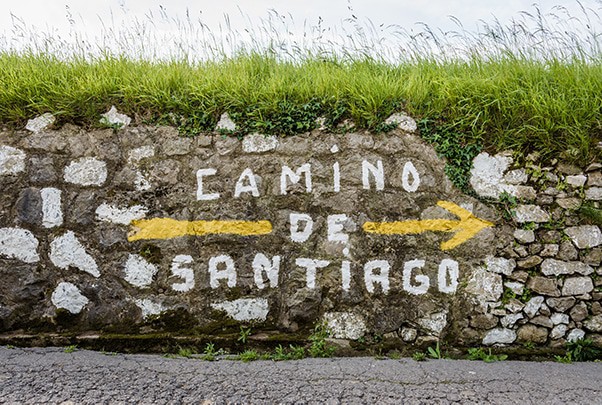
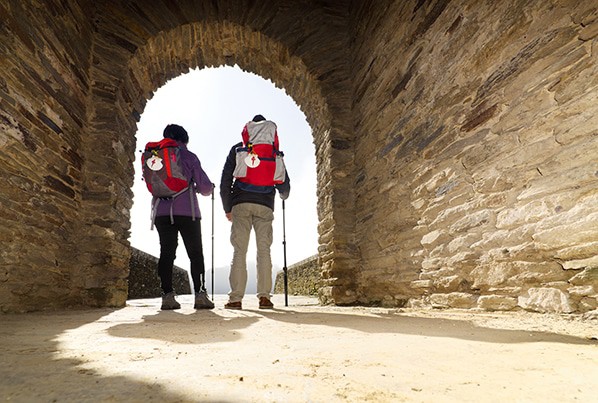
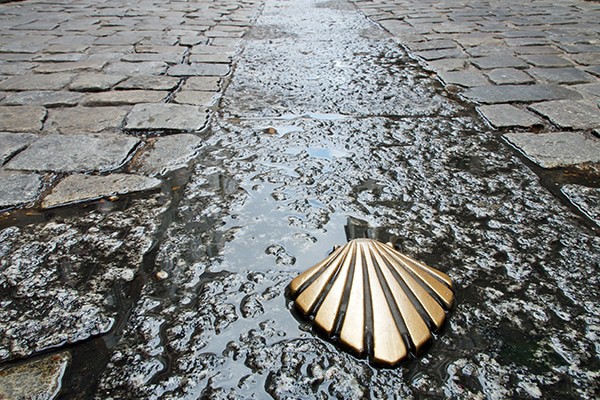
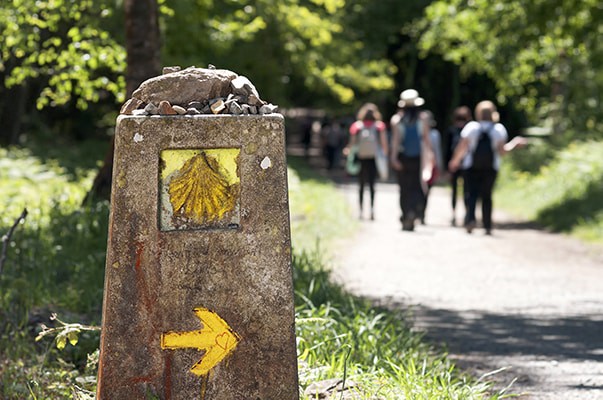
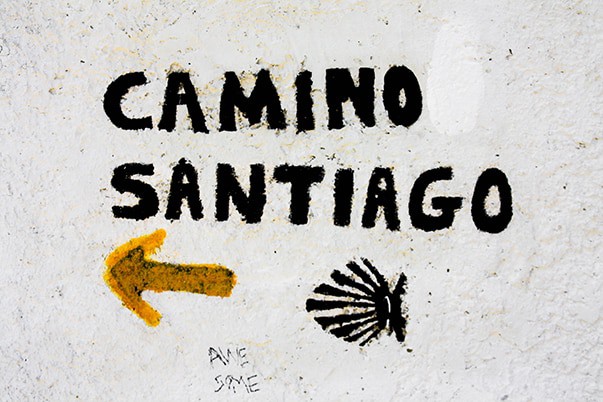
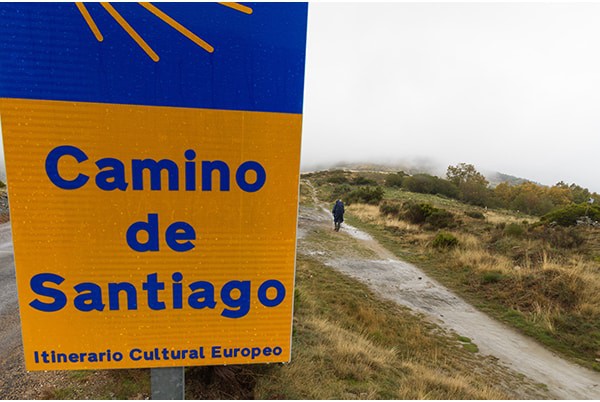
Shoes
Light, stiff-soled hiking shoes or boots are the best choice for the Camino. It is a bad idea to wear joggers, even trail runners, as you will feel every rock along the way.
You need to make a tradeoff between weight and support when it comes to your footwear, so the decision to wear shoes or boots will depend on the type of feet you have. Boots offer more support and ankle stability than shoes, but generally weigh at least 250g more than shoes. If you have a history of ankle sprains, joint hypermobility, Achilles tendonitis or posterior tibial tendon dysfunction, boots are the right choice. If you have a less problematic foot and ankle history, however, wearing a light, board-lasted hiking shoe is fine.
Waterproof liners are also a must for the Camino – life gets very miserable if your feet get wet, because the risk of blistering goes through the roof. Goretex liners are built into the entire range of Scarpa shoes and boots, which we now stock at Foot Health Clinic. The Goretex membrane allows for sweat to be wicked away from the foot, while stopping moisture from getting inside the shoe.
The specific models we chose for our trip were:
• Oliver: Scarpa Cyclone GTX (boots)
• Kim, Lucca and Finlay: Scarpa Motion GTX (shoes)
We found these worked very well, giving us plenty of protection without being overly heavy or hot.
On the Camino, you also need something to wear on your feet at the end of the day, in the albergues and around the villages. We chose orthotic thongs by Vasyli Medical to wind down in. Vasyli Medical orthotic thongs, which we stock at Foot Health Clinic, provide good arch support with a shock absorbing midsole, and allow the feet to breathe and foot muscles to relax. Keen sandals are also a popular and appropriate choice among pilgrims.
Orthotics
Custom foot orthotics are of enormous benefit on a long walk, reducing the strain on your feet and knees, which can help to minimise injury and reduce muscle fatigue.
For the Camino, we wore custom-made, full-length Orthema orthotics, made in the Foot Health Clinic orthotics laboratory from extra cushioned light and midweight EVA, and covered in Neoprene for extra cushioning and comfort.
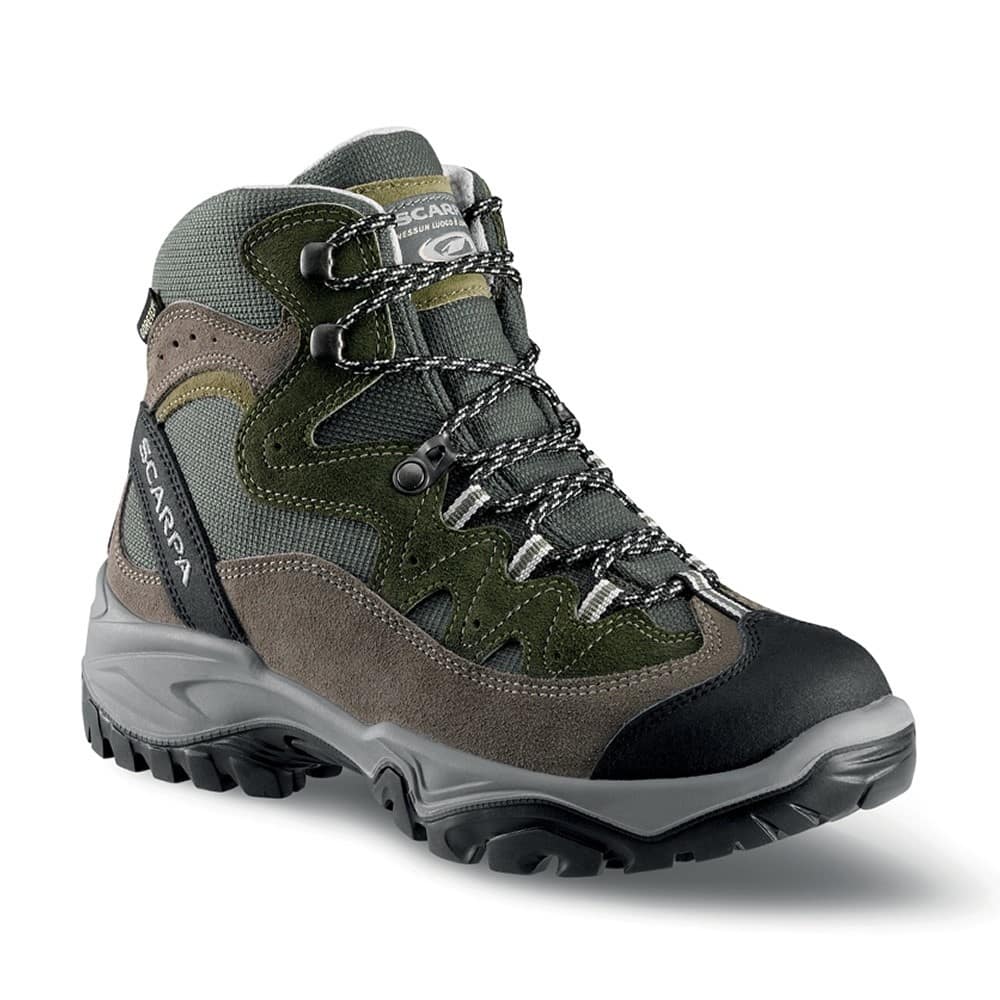
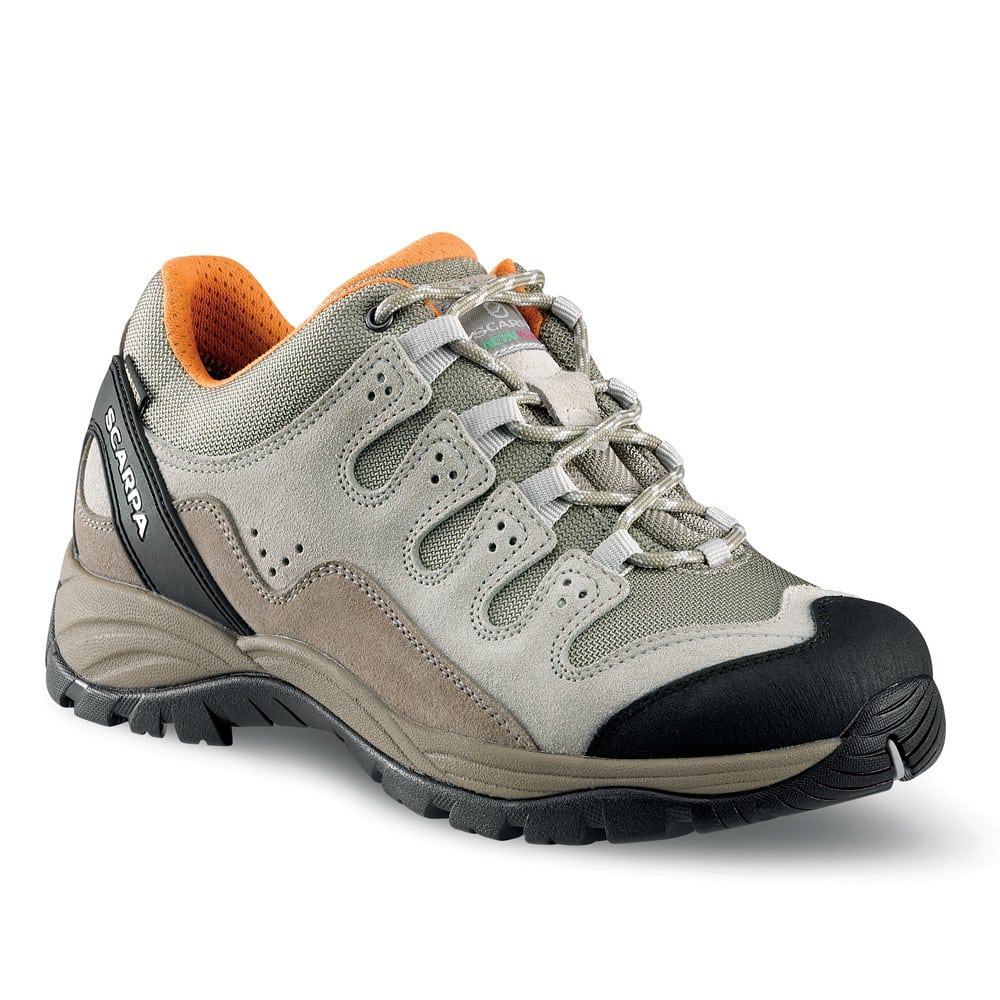
Socks
Always choose your socks and shoes together, as socks will affect the way a shoe feels and in some cases the size of shoe you need as well.
Always choose socks made from wicking materials such as COOLMAX fabric – cotton is no longer the best sock material and should be avoided. We chose Wigwam mid-weight padded hiking socks, which we now stock at Foot Health Clinic.
In addition, we wore Injinji Lightweight Liner toesocks, which we also stock. The purpose of liner socks is that the friction that normally occurs between your skin and your socks occurs instead between the two sock layers, thus reducing the risk of blistering.
Packs
We chose Osprey packs with matching waterproof covers for our trip. Osprey makes some of the lightest and most comfortable packs available. They have superior technical innovations such as breathable trampoline harnesses, laser cut waste bands and shoulder straps to reduce weight. They were very comfortable to wear and really helped to keep our weight to a minimum.
Kim and I carried bigger packs than an individual trekker would need, as we carried most of our children’s gear as well as our own. However, if you are only carrying your own gear try to keep your pack as light as possible. We suggest keeping your pack weight to about 10 per cent of your body weight, to help minimise strain on your feet, legs, hips, back and shoulders. Keep in mind that you will need to carry water and some food with you as well.
The specific packs we chose for our trip were:
• Oliver: Osprey Atmos 65
• Kim: Osprey Aura 50
• Lucca & Finlay: Osprey Sirrus 24
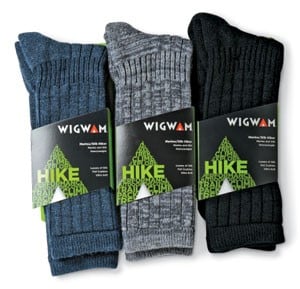
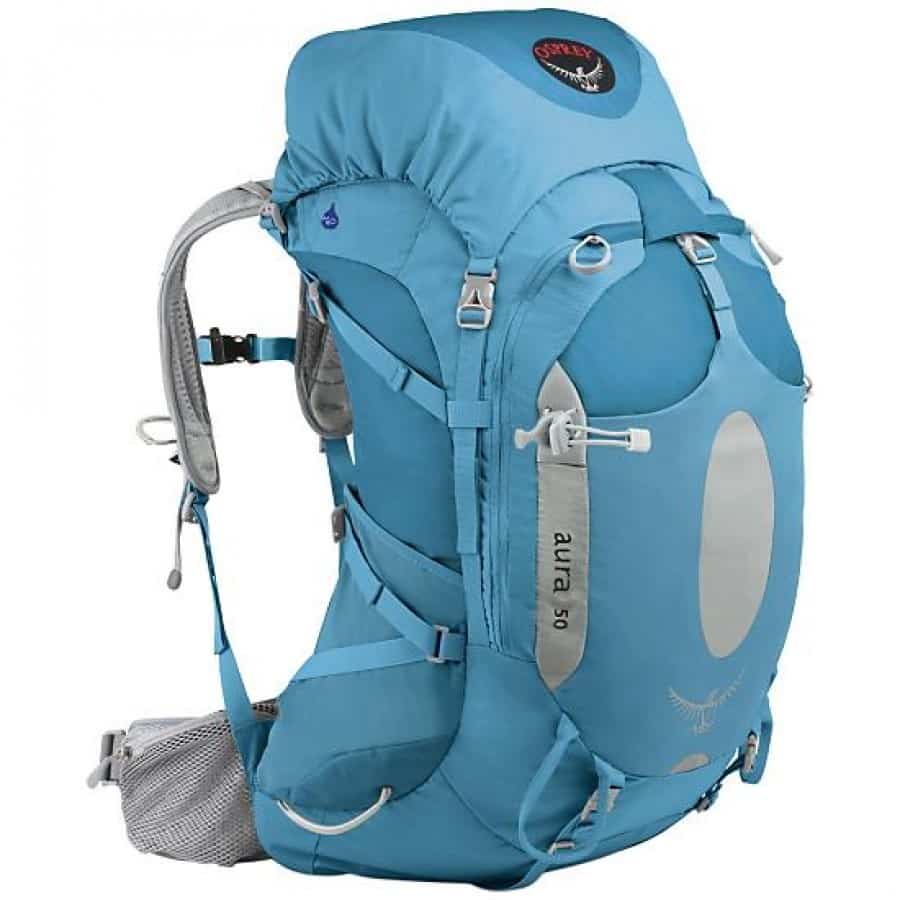
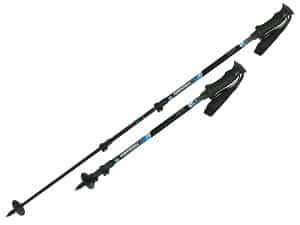
Poles
Trekking poles have an important role on the Camino: to keep you safe on the steep and loose sections of the walk. Poles are not only great for stability, however – they can also act as another set of legs to propel you forward, or even as a brake on steep descents which can really help to save the strain on your knees.
We used Komperdell C3 Carbon Power Lock poles. At just 350g a pair, they are one of the lightest poles available.
First Aid Kit
It is best to be prepared for problems like blisters, abrasions, muscle aches and pains, and musculoskeletal injuries.
Our first aid kit for feet included:
- Engo Blister Prevention Patches: Teflon blister prevention patches that can be applied to a shoe heel counter or directly onto an orthotic. These are slippery and reduce friction wherever they are applied. Note, however, that they are not designed to be applied to the skin
- Cutiplast Steril: non-stick, sterile island dressing for blisters or abrasions
- Zinc Oxide tape: sports tape for injury support
- Fixomull Stretch and Fleecy Web: both ultra thin, light friction prevention tape for areas prone to blistering
- Sterile saline ampoules: to flush blisters or wounds
- Betadine Antiseptic Solution to minimize infection from blisters or wounds
- Anti-fungal spray: for tinea treatment/prevention
- Scissors for trimming tape and dressings
- Anti-inflammatory gel and tablets to relieve our fatigued bodies
Making the best equipment choices is vital for a successful, enjoyable and injury-free trip. We found our choice of Scarpa footwear, Wigwam hiking socks, Injinji sock liners, Osprey packs, Orthema custom orthotics and Komperdell walking poles performed exceptionally well on the Camino de Santiago, with our family completing the trip without sustaining any blisters, injuries or illnesses.
If you’re considering undertaking the Camino, we encourage you to be prepared, physically and mentally, for a challenging but immensely rewarding journey. We felt a wonderful sense of achievement on our arrival in Santiago, and on being issued with the compostela, a certificate of accomplishment given to pilgrims completing the pilgrimage. Buen Camino!


